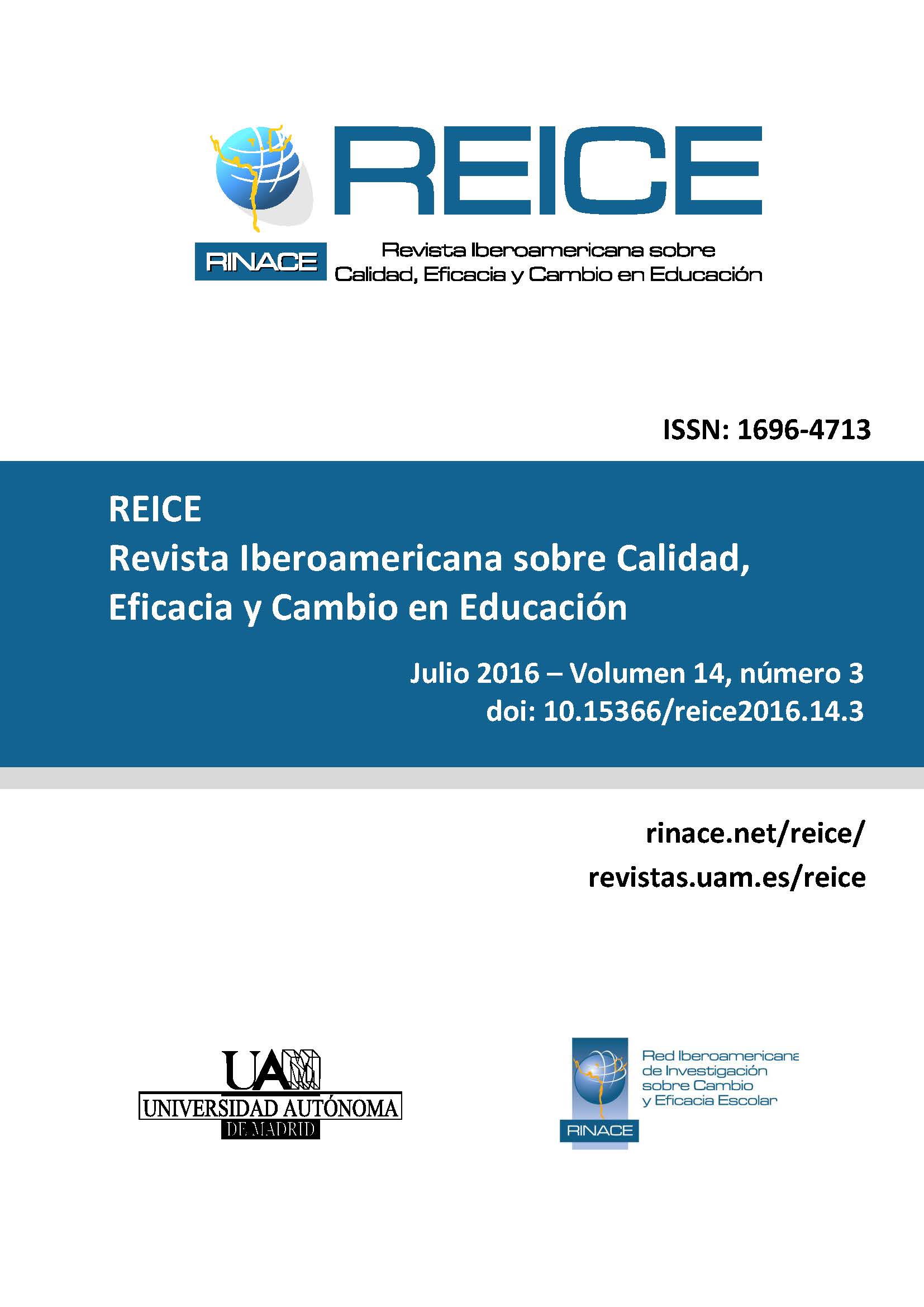Behaviors, Strategies and Achievement in Reading Comprehension in PISA: Analysis for Peru
Keywords:
Reading, Student evaluation, Academic achievement, Educational strategies, Formal education, Peru, Socioeconomic status.Abstract
Learning to read is internationally considered a central goal of schooling. In this analysis we used data from PISA on reading comprehension for Peru, with the aim of determining if the socioeconomic characteristics of students are associated with their performance, behaviors and educational strategies, as well as with their school environment. Regarding educational resources for students in their homes and institutions, a positive gradient was found, which was associated with socioeconomic status. While the average reading performance of Peruvian students grew significantly between 2000 and 2009, students of lower socioeconomic status showed the lowest improvement. There are three pedagogical variables with high explanatory power in reading achievement: comprehension, synthesis and memory strategies (the first two with a positive sign, and the last one with a negative sign). We also found a strong association between classroom climate and reading performance in educational institutions of lower socioeconomic status. Our results suggest that students with lower socioeconomic status have lower levels of learning opportunities and lower performance. We suggest attention and investment in the educational institutions these students attend, as well as designing and evaluating the impact of interventions focusing on the pedagogical variables mentioned above.
Downloads
References
Abadzi, H. (2011). Reading fluency measurements in EFA FTI partner countries: outcomes and improvement prospects. Washington, DC: World Bank.
Alverman, D., Simpson, M. y Fitzgerald, J. (2006). Teaching and learning in reading. En P. Alexander y P. Winne (Eds.), Handbook of educational psychology (pp. 427-256). Trenton, NJ: Lawrence Erlbaum Associates.
Benavides, M., León, J. y Etesse. (2014). Desigualdades educativas y segregación en el sistema educativo peruano. Una mirada comparativa de las pruebas PISA 2000 y 2009. Lima: GRADE.
Caro, D., Espinoza, G., Montané A. y Tam, M. (2004). Una aproximación a la alfabetización lectora de los estudiantes peruanos de 15 años: Resultados del Perú en la evaluación internacional PISA. Lima: UMC-Ministerio de Educación.
Cohen J. (1988). Statistical power analysis for the behavioral sciences. Nueva York: Routledge Academic
Cueto, S. (2007). Las evaluaciones nacionales e internacionales de rendimiento escolar en el Perú: balance y perspectivas. En Grupo de Análisis para el Desarrollo (Ed.), Investigación, políticas y desarrollo en el Perú (pp. 405-455). Lima: GRADE.
Ferrer, G. (2006). Sistemas de evaluación de aprendizajes en América Latina: balances y desafíos. Santiago: PREAL.
Hernández Padilla, E. y Bazán Ramírez, A. (2016). Efectos contextuales, socioeconómicos y culturales, sobre los resultados de México en Lectura en PISA 2009. REICE. Revista Iberoamericana sobre Calidad, Eficacia y Cambio en Educación, 14(2), 79-95. doi:10.15366/reice2016.14.2.005
Linnakylä, P. y Välijärvi, J. (2006). Rendimiento de los estudiantes finlandeses en PISA: Las claves del éxito en lectura. Revista de Educación, número extraordinario, 227-235.
LLECE. (2008). Primer reporte. Segundo estudio regional comparativo y explicativo. Los aprendizajes de los estudiantes de América Latina y el Caribe. Santiago: UNESCO.
LLECE. (2010). Factores asociados al logro cognitivo de los estudiantes de América Latina y el Caribe. Santiago: UNESCO
McEwan, P. J. (2015). Improving learning in primary schools of developing countries: A meta-analysis of randomized experiments. Review of Educational Research, 85(3), 353-394. doi:10.3102/0034654314553127.
Ministerio de Educación. (2006). Guía para el desarrollo de capacidades comunicativas. Lima: MED.
Ministerio de Educación. (2008a). Diseño curricular nacional de educación básica regular. Lima: MED.
Ministerio de Educación. (s/f). Orientaciones específicas para el plan lector nivel secundaria. Recuperado de http://www.oei.es/
National Reading Panel. (2000). Teaching children to read: an evidence-based assessment of the scientific research literature on reading and its implications for reading instruction. Recuperado de https://www.nichd.nih.gov/
OECD. (2009). PISA 2009. Assessment framework – key competencies in reading, mathematics and science. París: OECD.
OECD. (2009). PISA 2006 technical report. París: OECD.
OECD. (2010). PISA 2009 results: what students know and can do – student performance in reading, mathematics and science (Volume 1). París: OECD.
Paris, S., Morrison, F. y Miller, K. (2006). Academic pathways from preschool through elementary school. En P. Alexander y P. Winne (Eds.), Handbook of educational psychology (pp. 61-87). Trenton, NJ: Lawrence Erlbaum Associates
Raudenbush, S. y Bryk, A. S. (2002). Hierarchical linear models: Applications and data analysis methods (2ªed.). Newbury Park, CA: Sage.
Rodríguez-Valls, F. (2010). Los procesos de calidad en la enseñanza de la lectura, origen de un saber democrático y participativo. REICE. Revista Iberoamericana sobre Calidad, Eficacia y Cambio en Educación, 8(5), 119-132.
Royston, P. (2004). Multiple imputation of missing values. Stata Journal, 4(3), 227-241.
Schubert, F. y Becker, R. (2010). Social inequality of reading literacy. Research in Social Stratification and Mobility, 28(1), 109-133. doi:10.1016/j.rssm.2009.12.007
Schwabe, F., McElvany, N., y Trendtel, M. (2014). The school age gender gap in reading achievement: examining the influences of item format and intrinsic reading motivation. Reading Research Quarterly, 50(2), 219–232. doi:10.1002/rrq.92.
Snilstveit, B., Stevenson, J., Phillips, D., Vojtkova, M., Gallagher, E., Schmidt, T., Jobse, H., Geelen, M., Pastorello, M. G. y Eyers, J. (2015). Interventions for improving learning outcomes and access to education in low- and middle-income countries: a systematic review. Recuperado de http://www.3ieimpact.org/
Tedesco, J. C. y López, N. (2013). Diez años después: Comentarios tras una relectura del artículo “Algunos dilemas de la educación secundaria en América Latina”. REICE. Revista Iberoamericana sobre Calidad, Eficacia y Cambio en Educación, 11(2), 10-32.
Tiana Ferrer, A. (2011). ¿Y después de PISA qué? REICE. Revista Iberoamericana sobre Calidad, Eficacia y Cambio en Educación, 9(1), 3-5.
